Recognizing 10 years since Hurricane Katrina (Aug. 23-31, 2005)
First in a series of articles on the storm, its aftermath and the ensuing growth of Chabad-Lubavitch of Louisiana
As Hurricane Katrina raged on for nearly a week in August of 2005, the situation grew increasingly dire for the people left in its wake, with frantic pleas from around the world from those trying to reach family and friends in Louisiana, Mississippi and Alabama. Amid harrowing images of catastrophic devastation, discussions immediately began at Lubavitch World Headquarters, at 770 Eastern Parkway in the Crown Heights neighborhood of Brooklyn, N.Y., of how to help those in need.
Katrina was proving to be the third deadliest storm in U.S. history, claiming more than 1,800 lives, and was by far the most expensive, causing more than $100 billion in property damage.
Hurricane Katrina came in over the Gulf of Mexico and devastated most of the coastline from Louisiana to Alabama. It arrived as a Category 4 storm with winds of more than 140 miles per hour and a storm surge of almost 20 feet. The city of New Orleans—below sea level and surrounded by water—was hit the hardest. About 80 percent of it became flooded, with most areas under 10 to 20 feet of water. Hundreds of thousands of people had to evacuate, with many fleeing north to Baton Rouge and west to Houston.
Within a few days, several rabbinical students in their early 20s were dispatched to Baton Rouge in the hopes of helping displaced Jewish residents of New Orleans and beyond.

Two of those sent to the front lines were Levi Shmotkin and Mendel Druk, both young students at the time. It was the second time that the pair was dispatched to help after a major natural disaster—the first to Thailand following the massive tsunami in December 2004 that killed tens of thousands of people and wiped out huge swaths of land.
Though the men largely operated on their own, Rabbi Zelig and Bluma Rivkin, longtime co-directors of Chabad-Lubavitch of Louisiana, provided logistical information on the area and its Jewish residents. Their sons, Rabbi Mendel Rivkin and Rabbi Yochanan Rivkin, also shluchim in New Orleans, add that Shmotkin and Druk were “very effective.”
The Rivkins left New Orleans for Houston after it became too untenable for them to stay, though they remained in touch with search-and-rescue teams, coordinating with them in getting crucial items out of Chabad. Rabbi Zelig Rivkin and Rabbi Mendel Rivkin later met Druk and Shmotkin in Baton Rouge to help in the aftermath.
Today, both men are married with families and serve as Chabad-Lubavitch emissaries—Rabbi Shmotkin in New York City, and Rabbi Druk in Cancun, Mexico. Though a decade has passed and some of the details have faded, the memories of the destruction and of assisting those in great need remain. One memory that remains crystal clear, they say, is that their responses and actions were based on the influence and wisdom of the Lubavitcher Rebbe—Rabbi Menachem M. Schneerson, of righteous memory.

Shmotkin and Druk weren’t the only ones lending a hand in the storm’s aftermath.
Another group of students—Mendy Dubrowski, Mendy Horowitz, Shlame Landa and Pinny Backman—also went South after Katrina hit. The young men started out in Biloxi, Miss., and fanned out through other neighboring towns. Though there were no official shluchim in Mississippi at that time, yeshivah students did visit the area regularly, which gave the group a starting point when they arrived. (Unfortunately, street signs had been torn from the ground and rendered useless; it made finding neighborhoods and individuals that much more difficult.)
The rabbis-in-training offered a helping hand, both financial and physical, to those who needed it. They provided self-heating kosher food and mezuzahs for those who requested such. And, of course, they offered the proverbial shoulder to cry on—there to listen and assist in ways they could.
Hurricane Katrina was the costliest natural disaster in U.S. history, as well as one of the five deadliest hurricanes in the United States. Nearly 2,000 people perished in the storm and resulting floods, with nearly 1,000 categorized as missing. Total damages surpassed $100 billion, with the storm adversely affecting some 90,000 square miles. Recovery continues in many of the most hard-hit areas, particularly in New Orleans.

Here are some of the rabbis’ thoughts about what they saw and did in the days after Katrina, and how it left its imprint on them:
Rabbi Shmotkin: “After the hurricane struck, we knew it was really bad, and that people were suffering. We realized that the vast network of people that Chabad could help were those wondering about their relatives and if they were safe. We knew we had to get involved, had to get boots on the ground, so to speak.”
Rabbi Druk: “Initially, when we got to Baton Rouge, we didn’t know what to expect or what our work would entail. We only knew that there had been some sick and elderly Jewish people who had not been able to evacuate in time. We also had a list of people who had not been heard from by relatives and friends.”
Rabbi Shmotkin: “There was no Chabad presence in Baton Rouge at the time, so we got an apartment and worked out of there. We visited shelters armed with the list of names we’d been given and started looking for them. We worked on helping people who had nowhere to go get plane tickets or other transportation to family and friends in other cities.
“The local community in Baton Rouge was like ‘all-hands on deck’ in terms of helping each other. The people from New Orleans seemed completely shocked, like they weren’t quite sure about what to do and where they were going.
“We were on our own working with a New York-based search team. We had some addresses of people we knew were ‘stuck’ or left behind in New Orleans, and we went to go find them and offer them assistance.”

Rabbi Druk: “We saw enormous destruction. Some was beyond imaginable. We encountered many people, and each had a story to tell.
“I found it remarkable that with the enormous damage that the hurricane caused it did not destroy the faith of people.
“I learned that tragedies can bring out the best and worst in people. Some used the opportunity of the chaos and confusion to take advantage of people and their possessions, while others left everything of material value behind in order to be there for the less healthy and fortunate. We saw doctors providing and assisting patients in need of medical attention, and random strangers providing basic needs to people they have never met.”
Rabbi Shmotkin: “There’s one particularly beautiful story that I recall. There was an older gentleman who insisted on staying in his home during the storm, and his sister in Boston was really concerned about him. When we came to his door, he was extremely defensive about opening up. When he heard we were rabbis, he broke down and told us he hadn’t eaten in days and was so happy we were there.
“He was extremely grateful to see us. He told us that he didn’t necessarily practice his faith, but that during and after the storm, he turned to his Judaism and sang, over and over again, the only thing he knew in Hebrew—a song.
“We ended up helping him out and getting him to his sister.”
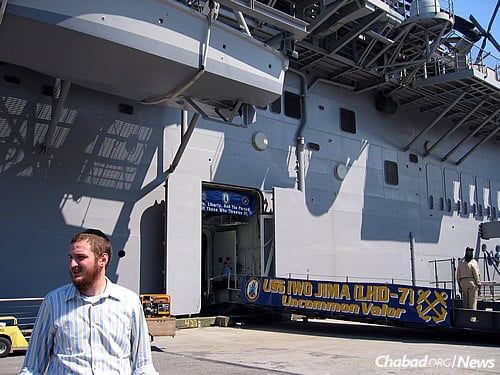
Rabbi Druk: “Levi, remember that we also had the opportunity to assist and interact with some Jewish doctors and volunteers. Among those we worked with was Rabbi Edgar Gluck, who was as a police chaplain in New York and is active in Jewish causes. He’s a very special person; he helped us get around and had a lot of connections. We also visited some of the shelters and provided meals to the general public as well.”
Rabbi Shmotkin: “Yes. One thing I definitely know is that when people are involved in helping or wanting to help in a disaster situation, sometimes they are out of sync with what needs to be done. The Talmud says that more than the calf wants to drink, the mother wants to give milk—and the same is true after a disaster. More often than not, the aid being offered is something that is neither wanted nor needed.
“You can’t assume a specific need just because you are in a position to give and they are in a position to take.”
Rabbi Druk: “Still, there is no question that we would do the same thing all over again. We are soldiers in the Rebbe’s army; you go when you are dispatched for a cause or need to provide spiritual or physical support.”
Rabbi Shmotkin: “The Rebbe’s entire message in everything he spoke of and lived by was about helping others—no matter when, no matter where.”
Next: Demographic changes in New Orleans and their effect on Chabad






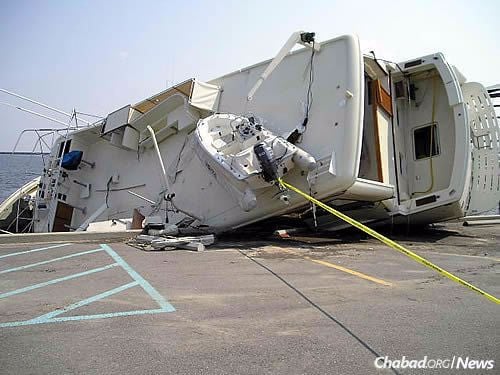




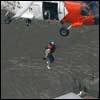
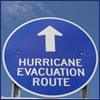
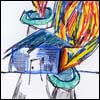


Join the Discussion